 Kato digital control system
Kato digital control system
> main > modelling > control > Kato controls > Kato Digital
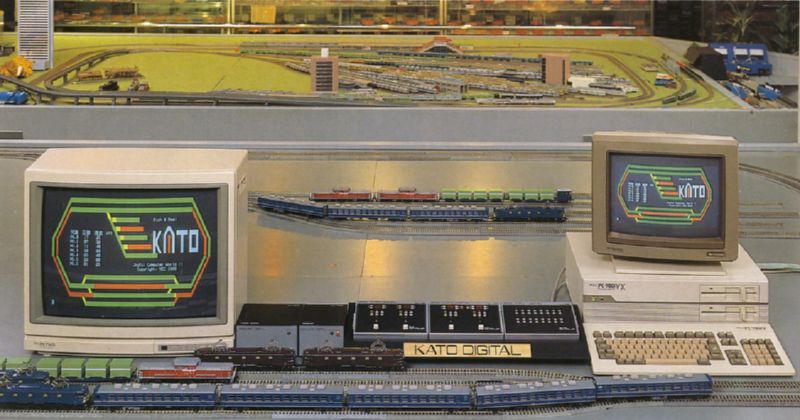
In the late 1980s Kato introduced a digital model train control system. In those days there was no standardisaton of such systems and Kato's system was propiatry like all others availlable in those days. It is quite clear that Kato's system didn't made it. The receivers would only fit in H0-scale locos, a serious drawback on a market where the much smaller N-scale is dominant. Although now obsolete, Kato did a clever job on the design. The control units plug-in on the side of a main unit, which contains the 'command station' and two slider controllers to control two trains simultaniously. Further sub-controllers add two more train controls. Switches (points) could be operated with a seperate switch controller (controls 16 switches) or by a computer (MS-DOS PC) via the RS-232 interface built-in in the main controller. This digital control system was in the Kato catalogue until about 1992. Later Kato co-operated with Digitrax and introduced the 'Zephyr' DCC controller. N-scale suitable DCC decoders became available through Digitrax and other manufacturers. Kato now also supplies decoder-fitted locos, trains and points via their 'Custom Shop'.
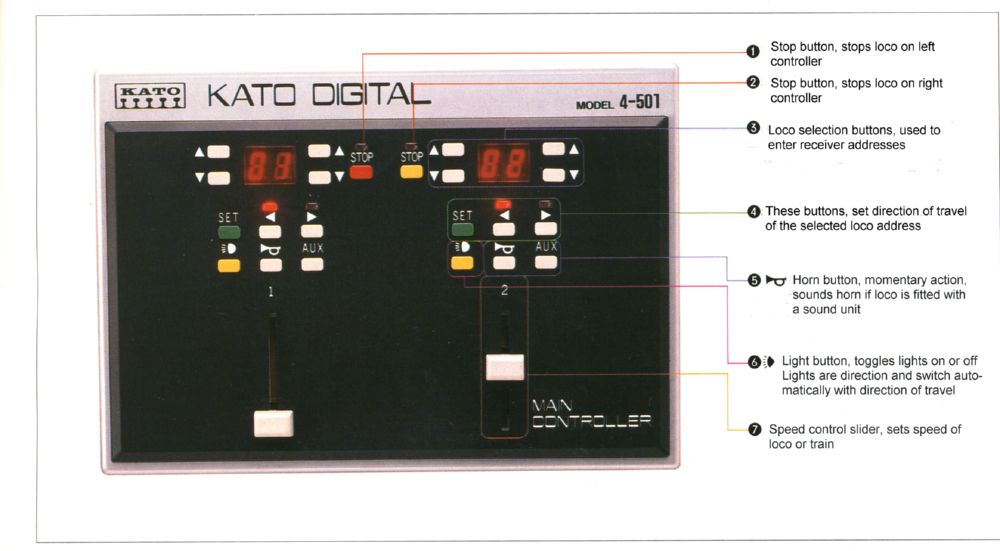
The units in detail:
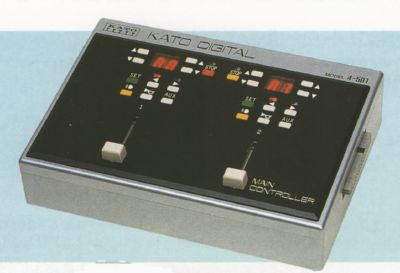 Ref. 4-501
Ref. 4-501
The main control unit, houses the circuitry to generate control signals and manages data traffic on the control buses. Two loco controls can be found on top of the unit. On the sides there are connectors to plug-in additional sub-controllers and switch controllers.
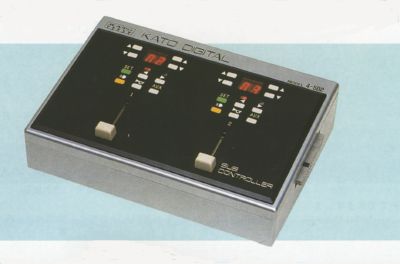 Ref. 4-502
Ref. 4-502
This is the sub-controller. The unit adds two extra loco controls to the two already fitted on the main controller
 Ref. 4-503
Ref. 4-503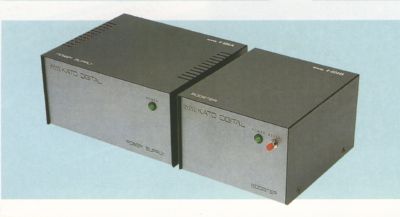 Ref. 4-504
Ref. 4-504
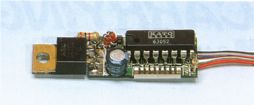
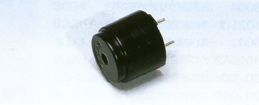

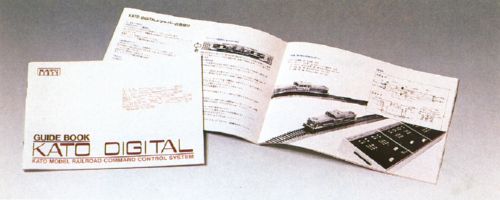
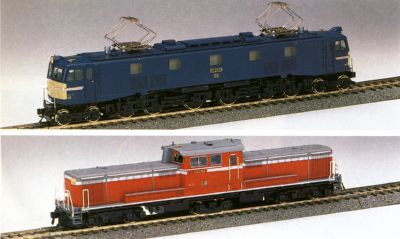
 Modelling
Modelling  Layouts
Layouts  Modeller's
Corner
Modeller's
Corner  Train
Simulators
Train
Simulators  Various
Various
 The
model news page. A quick overview of everything that is announced
by the various manufactures plus site updates etc.
The
model news page. A quick overview of everything that is announced
by the various manufactures plus site updates etc.